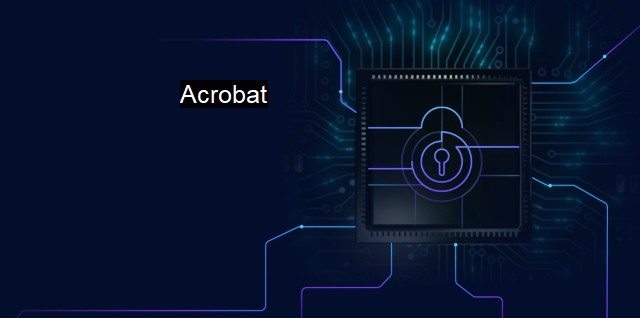What is Acrobat?
Exploring the Advantages & Vulnerabilities of Acrobat PDF Reader and Creator in Cybersecurity
In the world of digital technology and cybersecurity, the terms 'acrobat', 'antivirus', and 'cybersecurity' represent crucial concepts that are vitally interconnected. While it may surprise some to think of Acrobat when we speak of it in this sense, we are definitely alluding to Adobe Acrobat, one of the most widely recognized products from the Adobe software landscape.Adobe Acrobat is a family of application software and services developed by Adobe Inc. to create, view, manipulate, print, and manage files in Portable Document Format (PDF). As a standard part of everyday business across the globe, the use of Adobe Acrobat is ingrained in numerous practices, from official document signing to information sharing. Therefore, it's no leap to suggest that its security and its implications relating to cyber attacks should be given serious attention, hence its direct relationship with the world of cybersecurity and antivirus.
At its outset, the value of Acrobat in the realm of internet security was minimal at best. as the software morphed and grew more complex over time with variables such as hyperlinks and interactive forms that plugged into databases, they posed as strangely desirable targets for hackers. This susceptibleness has increased as cybercriminals have advanced their techniques with the ability to execute code within PDF files themselves. Such embedded snippets can allow a hacker to get his foot in the prey’s proverbial curtilage and effectively provide a springboard from which subsequent, more comprehensive attacks can be launched.
Adobe acrobat also began to support JavaScript engines, causing it to be inevitably exposed to JavaScript-based attacks. Given the colossal distribution of PDF files, JavaScript-enhanced documents discernibly have evolved as fascinating targets for the malefactors looking for system vulnerabilities to exploit. Consequently, Acrobat security is now a brand-new field within the vast universe of cybersecurity. Entities engaging with the application must keep strategically abreast of unprecedented flaws and intuitively deliberate adaptations pledging better security moving forward.
A crucial acrobat's role in this context is therefore an aggressive management strategy adapted in accordance with nefarious hackers who attempt to revel in system susceptibilities and perpetrate criminal actions within the cyber world. Instituting powerful firewalls, establishing robust antivirus software, meticulously updating acrobat applications, and maintaining fastidious user exercise represent treasured slice tactics within an overarching approach meant to ensure Acrobat applications are ideally armed with robust defense mechanisms.
This perceived bridge between Acrobat and antivirus software plays an instrumental part here since antivirus works as a stalwart protector warding off horrible cyber infections at the vital defense strata. Issues can emerge through unsuspected Acrobat documents serving as vessels for malevolent viruses, malware, or spyware eager to asperse system foundations. Strong antivirus duties aren't solely cleansing or barring such threats but also helping scholars who proactively discern and mend potential cyber crevices in the system for the greater defense good.
"acrobat" relating to cybersecurity stands for Adobe Acrobat, riddled with multifarious protective measures and mechanisms wielded against treacherous cybercriminal intention. Bridging with antivirus and cybersecurity ideologies, this practice pivots on the right defensive strategy omitting vulnerabilities that avenging cyber miscreants ardently seek. Thus, interpreting Acrobat in the cybersecurity context assents toward an apropos understanding of equipped defense regimen primes militantly against persisting cyber terrorism visibility aloft digital boundaries.

| | A | | | B | | | C | | | D | | | E | | | F | | | G | | | H | | | I | | | J | | | K | | | L | | | M | |
| | N | | | O | | | P | | | Q | | | R | | | S | | | T | | | U | | | V | | | W | | | X | | | Y | | | Z | |
| | 1 | | | 2 | | | 3 | | | 4 | | | 7 | | | 8 | | |||||||